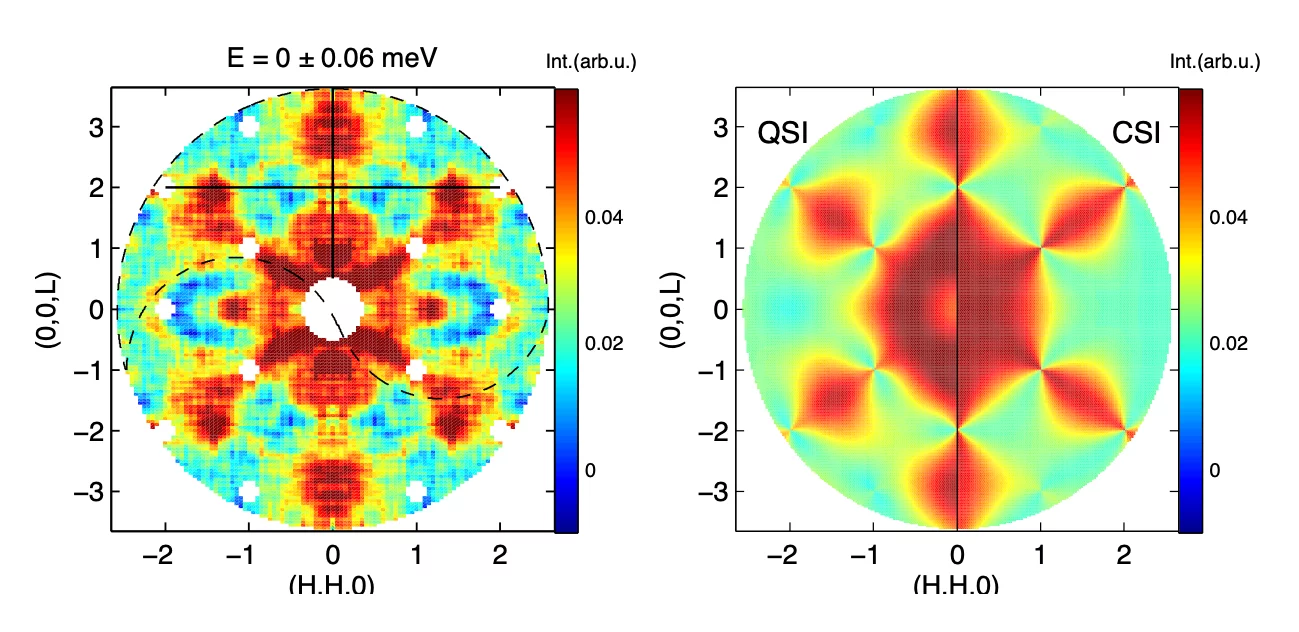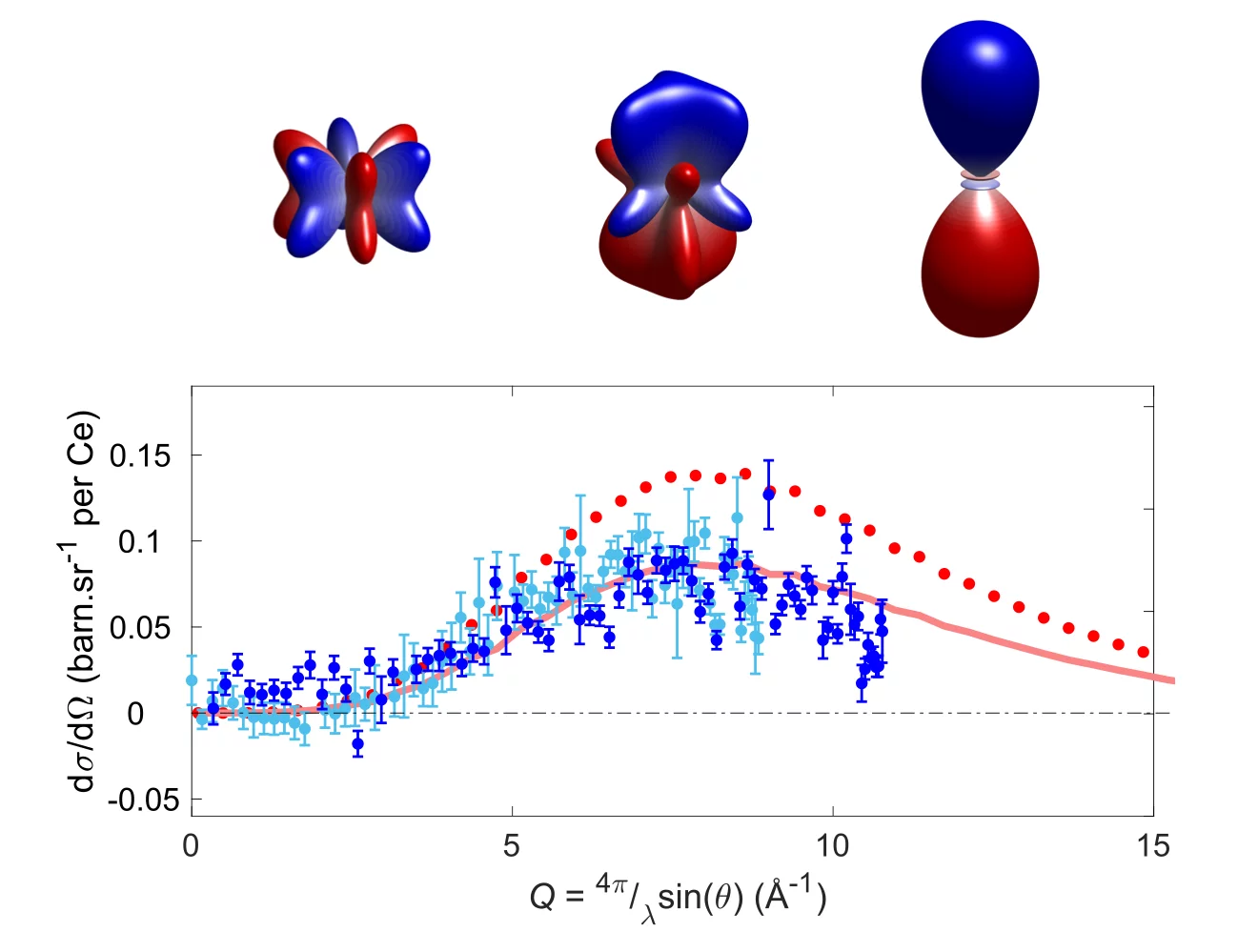Quantum spin ice is an appealing proposal of a quantum spin liquid – systems where the magnetic moments of the constituent electron spins evade classical long-range order to form a more exotic state. Such phases go beyond the established paradigm of symmetry-breaking order and associated excitations. Instead, theory defines quantum spin liquids using modern concepts like topological order, long-range quantum entanglement and fractionalized quasiparticles. Experimentally, it is nowadays an important challenge to identify unambiguous signatures of such states in real materials.
In solids, certain collective behaviors can lead to emergent phenomena that manifest through new objects that behave like predicted particles. For instance, quasiparticles that resemble magnetic monopoles are used to describe gapped excitations in spin ice – defects that violate the local ‘2-in-2-out’ rule constraining uniaxial moments ferromagnetically coupled on a lattice of corner-sharing tetrahedra. In a quantum version of spin ice, transverse terms relative to this first-neighbor interaction act as fluctuations that are predicted to slide the system into a dynamical ground state described by emergent electrodynamics, where magnetic gapless excitations play the role of a photon.
In samples of Pr2Hf2O7, the quasi-elastic structure factor measured at 0.05 K has features that can be explained by the expected emergent ‘photon excitations’ of a quantum spin ice (Figure 1).2 Moreover, the inelastic neutron scattering has the continuous character expected for the fractionalized excitations that are also expected in a spin liquid with long-range quantum entanglement. The interpretation of our results leads to describe such a sample as a tiny universe endowed with its own light of emergent magnetic excitations, propagating at the modest pace of roughly a 4-hour marathon (3.6 meter per second). In Ce2Sn2O7, our powder diffraction experiments using thermal neutrons (HRPT, SINQ) reveal diffuse scattering that is peaked at large scattering vectors. This indicates degrees of freedom of a complex magnetization density (Figure 2).1 In this case, our experimental results revealed an ‘octupolar quantum spin ice’ – a unique demonstration of a phase governed by frustrated multipoles.
Publications
- R. Sibille, N. Gauthier, E. Lhotel, V. Porée, V. Pomjakushin, R. A. Ewings, T. G. Perring, J. Ollivier, A. Wildes, C. Ritter, T. C. Hansen, D. A. Keen, G. J. Nilsen, L. Keller, S. Petit and T. Fennell “A quantum liquid of magnetic octupoles on the pyrochlore lattice” Nature Physics 16, 546–552 (2020)
- R. Sibille, N. Gauthier, H. Yan, M. Ciomaga Hatnean, J. Ollivier, B. Winn, U. Filges, G. Balakrishnan, M. Kenzelmann, N. Shannon and T. Fennell “Experimental signatures of emergent quantum electrodynamics in Pr2Hf2O7” Nature Physics 14, 711-715 (2018)
- R. Sibille, E. Lhotel, M. Ciomaga Hatnean, G. Nilsen, G. Ehlers, A. Cervellino, E. Ressouche, M. Frontzek, O. Zaharko, V. Pomjakushin, U. Stuhr, H. C. Walker, D. Adroja, H. Luetkens, C. Baines, A. Amato, G. Balakrishnan, T. Fennell and M. Kenzelmann “Coulomb spin liquid in anion-disordered pyrochlore Tb2Hf2O7” Nature Communications, 8:892 (2017)
Collaboration
- Dr. Elsa Lhotel, Institut Néel CNRS – Université Grenoble Alpes, France
- Dr. Sylvain Petit, LLB, CEA, CNRS, Université Paris-Saclay, France
- Dr. Vladimir Pomjakushin, LNS/PSI
- Dr. Tom Fennell, LNS/PSI
Funding
- SNSF Project No. 200021_179150
Associated junior researchers
- Victor Porée, PhD student University of Basel, 2018-2022


